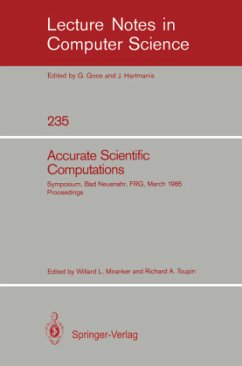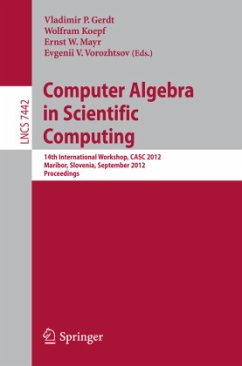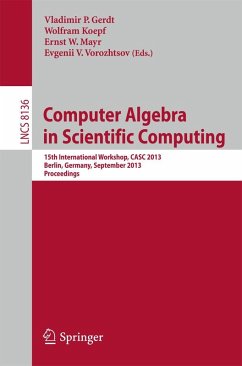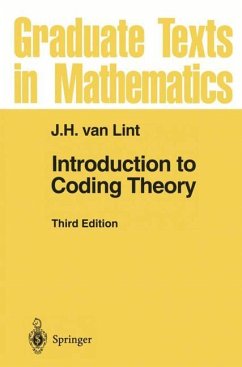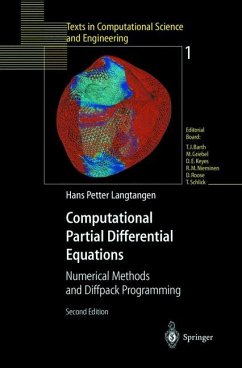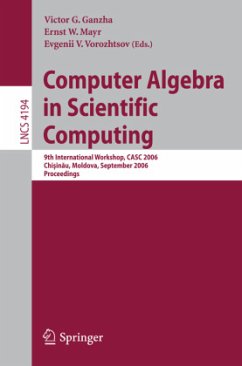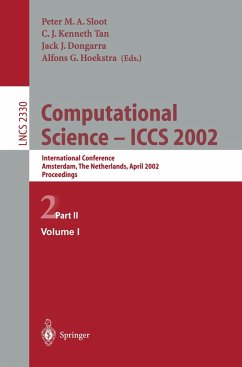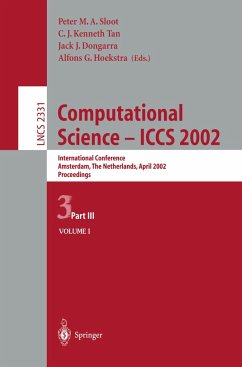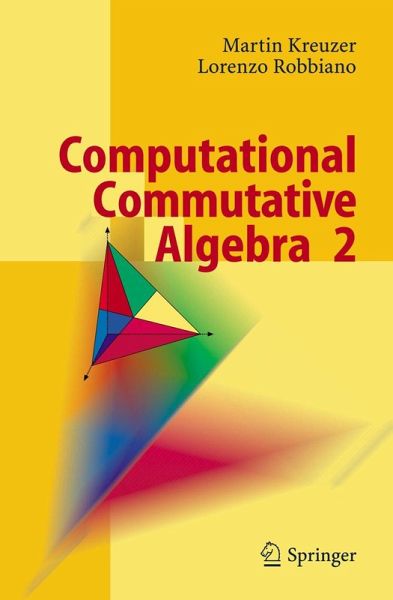
Computational Commutative Algebra 2
Versandkostenfrei!
Versandfertig in 6-10 Tagen
38,99 €
inkl. MwSt.
Weitere Ausgaben:

PAYBACK Punkte
19 °P sammeln!
This book is the natural continuation of Computational Commutative Algebra 1 with some twists.
The main part of this book is a breathtaking passeggiata through the computational domains of graded rings and modules and their Hilbert functions. Besides Gröbner bases, we encounter Hilbert bases, border bases, SAGBI bases, and even SuperG bases.
The tutorials traverse areas ranging from algebraic geometry and combinatorics to photogrammetry, magic squares, coding theory, statistics, and automatic theorem proving. Whereas in the first volume gardening and chess playing were not treated, in this volume they are.
This is a book for learning, teaching, reading, and most of all, enjoying the topic at hand. The theories it describes can be applied to anything from children's toys to oil production.
The main part of this book is a breathtaking passeggiata through the computational domains of graded rings and modules and their Hilbert functions. Besides Gröbner bases, we encounter Hilbert bases, border bases, SAGBI bases, and even SuperG bases.
The tutorials traverse areas ranging from algebraic geometry and combinatorics to photogrammetry, magic squares, coding theory, statistics, and automatic theorem proving. Whereas in the first volume gardening and chess playing were not treated, in this volume they are.
This is a book for learning, teaching, reading, and most of all, enjoying the topic at hand. The theories it describes can be applied to anything from children's toys to oil production.
Hofstadter's Law: It always takes longer than you think it will take, even if you take into account Hofstadter's Law. (Douglas R. Hofstadter) Dear Reader, why did we begin the foreword of this second volume with the same quote as the ?rst? There we wrote that it took three years of intense work just to ?ll three centimeters of your bookshelf. The completion of this volume took four years and it is about four centimeters thick. Thus we have a con?rmed invariant which governs our writing: our velocity is one centimeter per year, after all e?ects due to Hofstadter's Law have been taken into account. When westartedthisprojectinthelastmillennium,weplannedabookforlearning, teaching, reading and, most of all, enjoying the topic at hand. Surely there is no law which says that a mathematical book has to be dull, boring, dry, or tedious. But how do you make it enjoyable? Our approach has been to ?ll it with amusing quotes, varied jokes, funny word games, ?owery metaphors and occasional literarye?orts. There are two possible drawbacks of this method. Firstly, not everyone has the same sense of humour and not every metaphor works as intended. For instance, it is easy to joke about certain politicians, but what happens if they read this book? And when we wrote of a small boat sailing slowly into the Brazilian sunset, it was pointed out to us that this entails a geographical problem. Secondly, it is very di?cult to write humorously in a foreign language.





